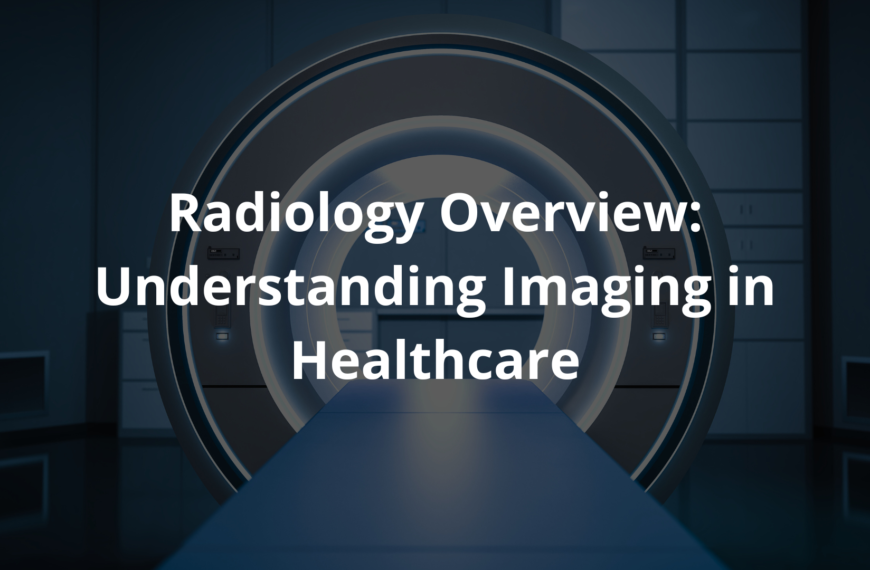Getting an MRI or CT scan? Wondering about the cost? Our FAQ guide answers everything you need to know before your test. Read on for helpful advice.
Radiology tests, like CT and MRI scans, can be puzzling, especially if you’re worried about costs. When I needed an MRI for my knee, I felt anxious about both the scan results and how much I’d have to pay. You’re not alone in this! It’s smart to ask your doctor or the imaging centre questions about the costs beforehand.
Find out if insurance covers part of the price, and ask about payment plans. Understanding these details can make a big difference. So, if you’re curious about cost-related FAQs for radiology tests, keep reading!
Key Takeaway
- Imaging tests can cost quite a bit, so it’s good to ask questions.
- Health insurance can help, but you might still have to pay some out-of-pocket expenses.
- Don’t be shy! Talk to your doctors or the imaging centre about cost concerns.
What Are the Costs of Imaging Tests?
Imaging tests can cost quite a bit, and the prices aren’t always the same everywhere. An X-ray, which is usually quick and simple, might cost between $50 and $150. These are common for things like checking broken bones(1). But if you need a CT scan, the price jumps to around $300 to $800. It’s a more detailed test, so it makes sense it costs more.
Then there’s an MRI, which is even pricier. These can range from $400 to over $1,000. I’ve heard stories of people being surprised by the bill – not fun.
Costs depend on where you go. A hospital might charge more than a smaller clinic. It’s smart to call ahead and ask for an estimate based on your specific test.
Quick tip:
- X-ray: $50–$150
- CT scan: $300–$800
- MRI: $400–$1,000+
Always ask questions and plan ahead. It’ll save you stress later.
Will My Health Insurance Cover Imaging Tests?
Paying for imaging tests like X-rays or MRIs can be tricky, even if you have health insurance(2). It all depends on your specific plan. Some cover the full cost, others only part, and some might not cover certain tests at all. It’s not as simple as it seems.
A mate of mine once got an MRI, thinking it was fully covered. Later, they got a bill for half the cost—over $500! They hadn’t checked their policy properly. That’s when I realised how important it is to know what’s covered before booking anything.
Here’s what you can do:
- Review your policy: Look for imaging test details.
- Ask questions: Does your plan include MRIs, CT scans, or ultrasounds?
- Call for a quote: Your insurer can give you an estimate.
Taking these steps can save you from unexpected bills. It’s worth a quick call to avoid a shock later.
Are There Out-of-Pocket Expenses?

When you think about imaging tests, like MRIs or CT scans, you might assume your health insurance will take care of the whole cost. But that’s not always the case. Even with insurance, you could still have out-of-pocket costs. These might include co-payments (a small fee you pay at the time of the test) or deductibles (the amount you pay before your insurance kicks in).
A mate of mine had an MRI and was shocked to get a $150 bill. She thought it’d be fully covered, but her deductible hadn’t been met yet. It was a tough lesson.
Before booking, check these:
- Co-payments: What’s the fee at the time of service?
- Deductibles: Have you paid enough for insurance to cover the rest?
- Extra fees: Any facility or service charges?
Call your insurer and ask questions. It’s worth it to avoid surprises later. Better safe than sorry.
How Can I Get a Quote for My Imaging Test?
If you’re curious about how much your imaging test will cost, just ask! The easiest way is to ring the imaging facility. They’ll usually give you a quote based on the scan type (like X-ray, CT, or MRI) and might ask if you’ll need extras like contrast agents.
Contrast agents, which make the images clearer, can cost more. Plus, some places charge a facility fee (basically for using their space and equipment).
When you call, ask:
- What’s the total cost, including everything?
- Are there extra fees, like for contrast or facilities?
- Do I need to pay anything upfront?
- How much will my insurance cover?
A friend of mine once skipped asking about contrast and got a surprise $300 bill. So, it’s worth checking. Call your insurance too, so you’re clear on what they’ll cover. Being prepared means no surprise costs later!
What If I Can’t Afford My Imaging Test?
The cost of medical tests can be tough to handle. It’s stressful when you don’t have the money or your insurance won’t cover it all. But there are ways to manage. If a scan or test feels out of reach, talk to your doctor. They might have options.
For example, my cousin once needed a CT scan that cost $800. After speaking with her doctor, she found out an ultrasound could work instead. It was only a few hundred dollars. That conversation saved her a lot of money.
Here’s what you can ask:
- Are there cheaper alternatives?
- Can I set up a payment plan?
- What’s the cost without insurance?
Doctors understand budgets can be tight. Being honest about what you can afford helps them suggest solutions. It’s okay to ask questions. Sometimes, just asking can make things easier.
Are There Bulk-Billed Options Available?

There’s a bit of good news when it comes to paying for medical imaging tests. Some radiology clinics offer bulk billing, especially if you’ve got a Medicare or healthcare card. My friend Tim found this out when he needed an X-ray. He didn’t have to pay upfront because Medicare covered the cost directly. It was a big relief for him.
If you’re in a similar spot, here’s what you can do:
- Ask about bulk billing: Call the imaging centre and check if they offer it.
- Confirm eligibility: They’ll likely need to know if you have a Medicare or healthcare card.
- Check what’s covered: Some tests might not qualify, so it’s worth asking.
If you’re eligible, Medicare pays the bill, and you avoid out-of-pocket costs. Always ask when booking to avoid surprises. It’s a small step that could save you a lot.
What Should I Do If I Receive an Unexpected Bill?
Bills can be stressful. You open one, and suddenly your heart races. But don’t panic—take a moment. Start by checking the bill closely. Does it match what you were told? (Like, if you expected $250 for an MRI, but it’s $400, something’s not right.) Sometimes it’s a simple error, or there might be extra fees, like for a contrast dye or admin costs.
If it doesn’t add up, call the billing department. Here’s how to handle it:
- Review the details: Look at the date, type of scan, and any extras listed.
- Call the billing team: They can explain charges and correct mistakes.
- Ask for a breakdown: Line by line, if needed.
- Stay calm: Most staff are happy to help.
My neighbour once got a surprise MRI bill. After calling, he learned about a missed fee and even got a discount. So, ask questions—it’s worth it.
Practical Tips for Managing Imaging Costs
Sources: ABC News (Australia).
It’s smarter to ask questions than to assume when it comes to medical tests. Costs can add up fast, and no one likes surprise bills. I’ve seen people get stuck with unexpected fees just because they didn’t ask the right questions. Your health matters, but so does your wallet.
Here’s what to ask:
- Cost estimates: Find out how much the test might cost. No one wants a bill they can’t handle.
- Insurance coverage: Check if your insurance covers the test fully or partly (some only cover 80%, like my MRI once).
- Extra fees: Ask about hidden costs, like contrast agents or admin charges.
Also, read your health insurance policy carefully. Some things aren’t covered, and knowing that early can save you stress. If you’ve got a test coming up, ask about costs a few weeks ahead. It gives you time to compare prices or find bulk billing.
FAQ
What is the gap fee for MRI scans?
The “gap fee” refers to the difference between the Medicare rebate and the actual cost of an MRI scan. Medicare typically covers a portion of the cost, but patients may need to pay the remaining gap fee out-of-pocket. The gap fee can vary depending on the imaging provider and the specific type of MRI service.
How can I find a bulk billed MRI service?
To find a “bulk billed” MRI service, you can check if the imaging provider offers “bulk billing” for Medicare card holders. This means they will accept the Medicare rebate as full payment, so you won’t have to pay any out-of-pocket costs. You can also ask your doctor for recommendations on bulk billed MRI services in your area.
What do I need to know about MBS items for medical imaging?
The “MBS items” refer to the Medicare Benefits Schedule, which lists the various medical services and procedures covered by Medicare. For medical imaging like MRI scans, there are specific MBS item numbers that determine the level of Medicare rebate you’ll receive. It’s important to understand the relevant MBS items to know how much you may need to pay out-of-pocket.
How can I request a referral form for an imaging study?
To request a referral form for an imaging study, such as an MRI or X-ray, you’ll need to speak with your doctor or healthcare provider. They can provide you with the necessary “referral form” that includes important details like the reason for the imaging, the specific test required, and any relevant medical history. Having this referral form is often essential for accessing medical imaging services.
What should I know about radiation dose for medical tests?
When undergoing medical tests that involve radiation, such as X-rays or CT scans, it’s important to understand the potential “radiation dose” involved. While these tests are generally safe, exposure to radiation can carry some risks, especially for vulnerable populations like children or pregnant women. Your healthcare provider can explain the specific radiation dose associated with the test and discuss any potential concerns.
Conclusion
Knowing how much radiology tests cost is pretty important. It helps you not get caught off guard by surprise fees. You should always ask questions and check with your health fund. Talk to your doctors about anything that worries you. This way, you can keep your mind on what matters most—getting the right care when you need it. Don’t forget, it’s your health, so be sure to look out for yourself!
References
- https://www.healthdirect.gov.au/paying-for-diagnostic-testing
- https://www.health.gov.au/topics/private-health-insurance/what-private-health-insurance-covers




